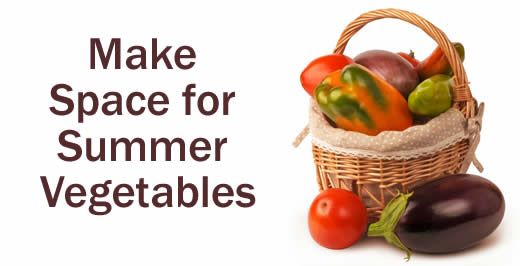
|
If you grow vegetables year-round in an established garden you'll need to make space for summer crops. When you plant winter vegetables in fall you can usually pull up just about everything and start out fresh. But in spring when you plant summer vegetables it's not quite that easy, because the seasons for many crops overlap. It's often necessary to plant among some winter vegetables that are still going strong and to pull out others - even if they aren't quite finished - in order to make enough room for summer vegetables. The smaller the space, the more important it is to schedule your fall planting so that most cole crops - such as cabbage, broccoli, and cauliflower - are finished by the time you are planting. If they're still going strong, plant them earlier next year. Peas often get ratty looking and mildewy by summer planting time, so pull them out and replace them with tomatoes and corn. Onions and garlic stay in the ground to mature as the days lengthen. Be sure to weed your onions often; their small root systems can't compete with the roots of weeds. Replace parsley as it gets warmer. A good place for it is east of a row of trellised cucumbers, where it will get some shade on hot afternoons. By cleaning out most winter crops, and cultivating and amending the soil before summer planting, you help prevent a carryover of pests and diseases. |